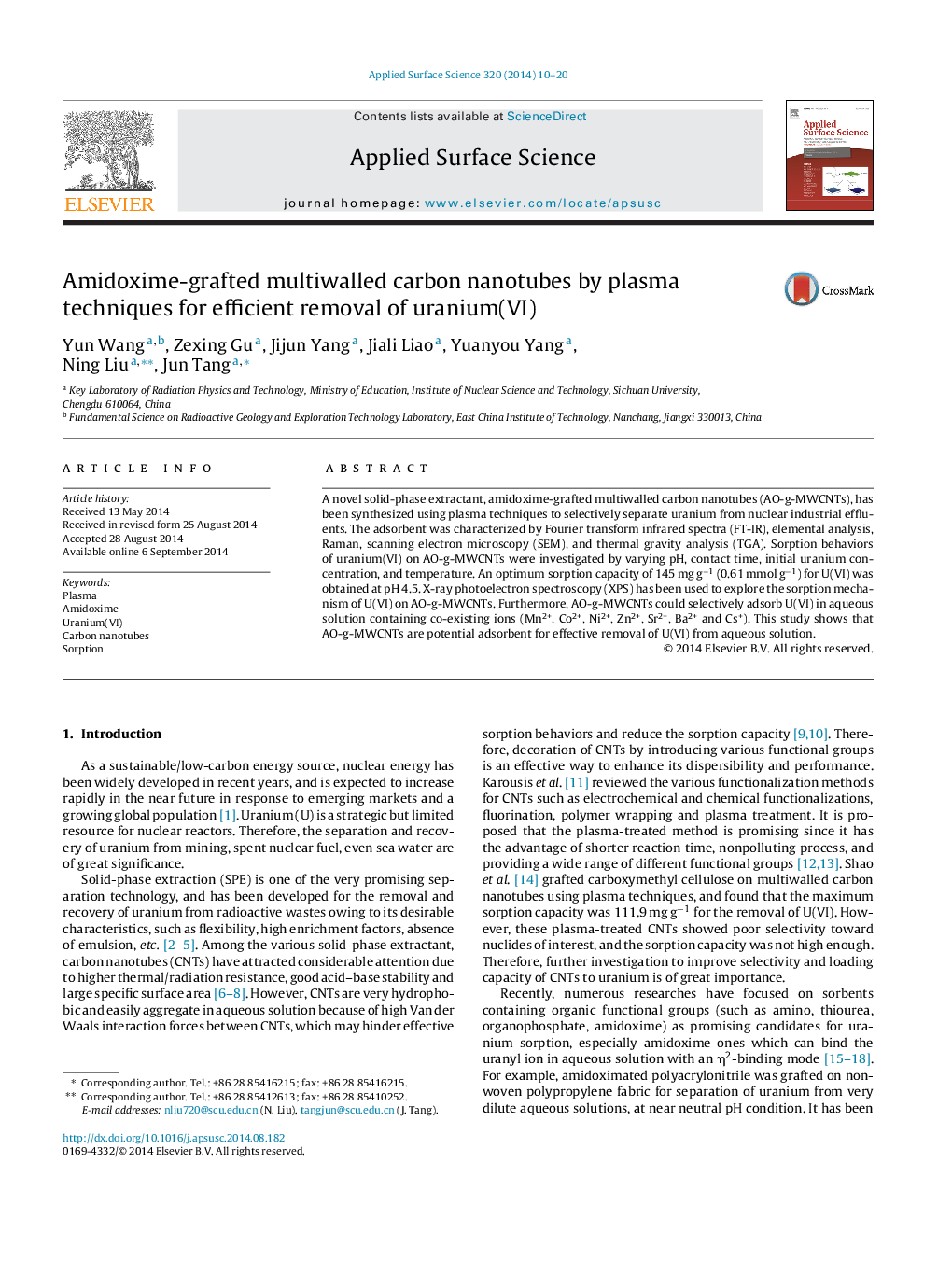| Article ID | Journal | Published Year | Pages | File Type |
|---|---|---|---|---|
| 5349593 | Applied Surface Science | 2014 | 11 Pages |
Abstract
A novel solid-phase extractant, amidoxime-grafted multiwalled carbon nanotubes (AO-g-MWCNTs), has been synthesized using plasma techniques to selectively separate uranium from nuclear industrial effluents. The adsorbent was characterized by Fourier transform infrared spectra (FT-IR), elemental analysis, Raman, scanning electron microscopy (SEM), and thermal gravity analysis (TGA). Sorption behaviors of uranium(VI) on AO-g-MWCNTs were investigated by varying pH, contact time, initial uranium concentration, and temperature. An optimum sorption capacity of 145 mg gâ1 (0.61 mmol gâ1) for U(VI) was obtained at pH 4.5. X-ray photoelectron spectroscopy (XPS) has been used to explore the sorption mechanism of U(VI) on AO-g-MWCNTs. Furthermore, AO-g-MWCNTs could selectively adsorb U(VI) in aqueous solution containing co-existing ions (Mn2+, Co2+, Ni2+, Zn2+, Sr2+, Ba2+ and Cs+). This study shows that AO-g-MWCNTs are potential adsorbent for effective removal of U(VI) from aqueous solution.
Related Topics
Physical Sciences and Engineering
Chemistry
Physical and Theoretical Chemistry
Authors
Yun Wang, Zexing Gu, Jijun Yang, Jiali Liao, Yuanyou Yang, Ning Liu, Jun Tang,
